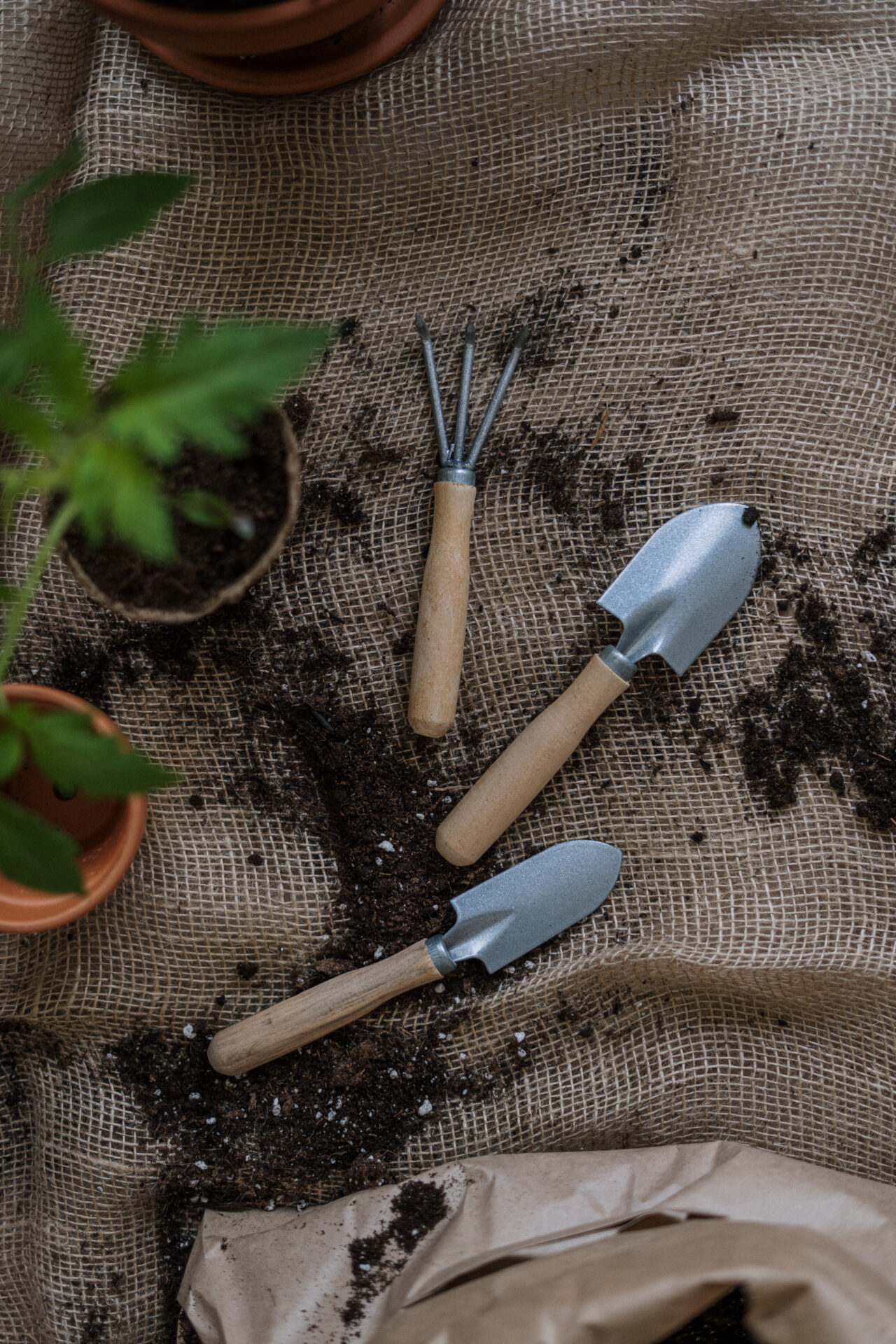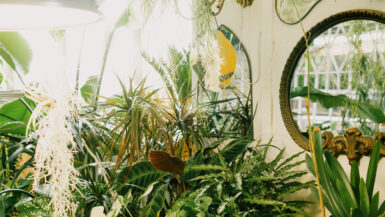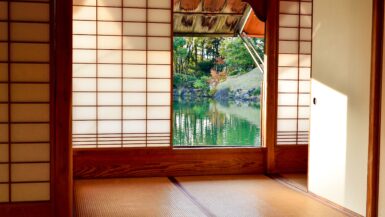How do you optimize space with indoor vertical gardens? Welcome to this comprehensive guide on optimizing space through the ingenious concept of indoor vertical gardening. As urban dwellers continue to face challenges in maximizing limited living spaces, vertical gardens provide an innovative solution for those looking to integrate greenery while addressing spatial constraints.
In this article, we delve into the various methods of creating an indoor vertical garden and explore the benefits of incorporating such a system into your home or office. We will discuss the different types of vertical gardens available, essential factors to consider, such as lighting and irrigation, and the most suitable plants for your indoor vertical oasis.
By the end of this guide, you will be well-equipped with the knowledge and confidence to embark on your journey towards a greener, more efficient living space.
Integrating Vertical Gardens into Home Design When You Optimize Space with Indoor Vertical Gardens
Incorporating an indoor vertical garden into your home design optimizes space and adds a unique aesthetic element that can transform any living area. Vertical gardens can be adapted to suit various design styles, from rustic to contemporary.
This section will explore innovative ways to seamlessly integrate vertical gardens into your home, including incorporating them into existing structures and creating custom installations. We will also discuss how these gardens can be designed to cater to children’s interests and needs, encouraging their involvement in gardening and fostering a love for nature.
Adapting Existing Structures for Vertical Gardens
Before diving into custom installations, consider utilizing existing structures in your home as a foundation for your vertical garden. This can include walls, shelves, or even windows. By repurposing these spaces, you can create a more cohesive and natural integration of greenery into your home design.
For example, you can attach planters to a wall, make a living wall, or use a bookshelf to house a collection of potted plants. Look for underutilized spaces in your home where a vertical garden can significantly impact the overall design and atmosphere.
Custom Installations for a Personal Touch
Custom installations offer endless possibilities for those looking to make a statement with their indoor vertical garden. Options include freestanding units, hanging gardens, or a living wall with built-in irrigation systems.
These installations allow you to tailor the garden to your specific needs and design preferences, creating a truly unique piece of living art. Working with a professional designer or landscape architect can help bring your vision to life and ensure the successful implementation of your vertical garden.
Creating a Child-Friendly Vertical Garden
Vertical gardens offer an excellent opportunity to introduce children to the wonders of gardening and nature. With a child-friendly design, you can encourage their curiosity and engagement. A great place to start is incorporating elements that appeal to children, such as colorful planters or whimsical decorations.
Additionally, it is vital to select low-maintenance plants that are safe for children to handle. To learn more about designing a vertical garden specifically for children, check out our guide on How to Create an Indoor Vertical Garden.
Combining Functionality and Style
Balancing functionality and style is the key to successfully integrating a vertical garden into your home design. Consider factors such as lighting, irrigation, and plant selection to ensure your garden thrives while complementing your interior design. For a cohesive look, choose planters and materials that align with your home’s aesthetic, and carefully curate a selection of plants with varying textures, colors, and growth habits to create visual interest.
Integrating a vertical garden into your home design allows you to make the most of your available space while enhancing your living environment with lush greenery. It provides a unique opportunity to combine form and function, creating a stunning and practical addition to your home that family members of all ages can enjoy.
DIY Vertical Garden Structures and Systems
Embarking on a DIY journey to create your indoor vertical garden can be rewarding and cost-effective. Creativity and resourcefulness allow you to design and construct your custom vertical garden using materials and systems tailored to your space and personal style.
In this subsection, we will explore various DIY vertical garden structures and systems you can quickly assemble and install in your home, along with helpful tips to ensure a successful and thriving green oasis.
Creating a Pallet Garden: A Simple and Rustic Solution
One of the easiest and most affordable ways to create a vertical garden is by repurposing a wooden pallet. With minimal modifications, you can transform a pallet into a rustic and charming garden structure. To make a pallet garden, line the back and sides of the pallet with landscape fabric, staple it securely, and fill the pallet with potting soil. Afterward, plant your chosen greenery into the slats, allowing them to take root before mounting the pallet vertically.
Utilizing Hanging Pocket Planters: A Flexible and Scalable Option
Hanging pocket planters are an excellent choice for those seeking a versatile and easily adjustable vertical garden system. These fabric or plastic pockets can be hung on a wall or even from the ceiling, and their modular nature allows you to create a vertical garden that fits your specific space requirements. Additionally, pocket planters can be easily rearranged or expanded, making them an ideal solution for those who enjoy frequent updates to their garden design.
Building a Ladder Garden: A Stylish and Space-Saving Solution
A ladder garden is an excellent option for creating a vertical garden with elegance and sophistication. You can either repurpose an old ladder or construct one from scratch using wood or metal. Secure shelves or planter boxes on each ladder rung, providing a stable and attractive platform for your plants. A ladder garden offers the added benefit of being easily portable, allowing you to relocate your garden as needed.
Assembling a Trellis Garden: A Classic and Functional Choice
A trellis garden offers a classic and functional solution for those interested in a more traditional vertical garden structure. You can construct a trellis using wood, metal, or even PVC pipes and attach it to a wall or create a freestanding unit.
Plant climbing or vining plants at the base of the trellis to create a lush and visually striking vertical garden. Trellis gardens are particularly well-suited for growing edible plants such as tomatoes, peas, and beans.
Consider lighting, irrigation, and plant selection when creating your DIY vertical garden to ensure a thriving and visually appealing garden. With some planning and creativity, you can build a stunning indoor vertical garden that optimizes your space and adds a personal touch to your home decor.
Tips for Maintaining a Healthy Vertical Garden
Creating an indoor vertical garden is an excellent way to optimize space while incorporating nature into your living environment. However, proper maintenance is crucial to ensure that your vertical garden thrives. This section will share valuable tips and practices to help keep your vertical garden healthy and flourishing, covering essential topics such as watering, lighting, plant selection, and pest control.
Mastering the Art of Watering: Finding the Right Balance
One of the most critical aspects of maintaining a healthy vertical garden is providing your plants with the appropriate amount of water. Overwatering or underwatering can lead to various issues, such as root rot or wilting.
To determine the ideal watering schedule for your vertical garden, consider factors like the type of plants, the size of the containers, and the humidity level in your home. Remember that plants in vertical gardens often require more frequent watering than their horizontal counterparts, as gravity causes water to drain more rapidly from the soil.
Let There Be Light: Ensuring Optimal Illumination
Adequate lighting is essential for the growth and well-being of your plants. Many indoor vertical gardens do not receive sufficient natural light, so providing supplemental lighting using grow lights is crucial. LED grow lights are an energy-efficient option catering to your plants’ needs.
Research the light requirements of your chosen plants and adjust the grow lights accordingly to ensure that your vertical garden receives the appropriate duration and intensity of light.
Plant Selection: Choosing the Right Plants for Your Space
Selecting suitable plants for your vertical garden is key to its health and success. When choosing plants, consider your space’s available light, temperature, and humidity. Opt for plants with similar growth requirements to ensure they thrive under the same conditions. Additionally, selecting low-maintenance plants can help reduce the demands of upkeep, allowing you to enjoy your vertical garden with minimal stress.
Keep It Clean: Regular Pruning and Deadheading
Regular pruning and deadheading are essential practices for maintaining a healthy vertical garden. Pruning involves trimming overgrown or damaged plant parts, promoting new growth and a more attractive appearance.
Deadheading is the process of removing spent flowers, which encourages the plant to produce more blooms. These practices improve the aesthetics of your vertical garden and enhance its overall health by preventing the spread of disease and pests.
Pest Control: Keeping Unwanted Visitors at Bay
Pests can be a significant issue for indoor vertical gardens, damaging plants and potentially spreading disease. Monitor your garden regularly for signs of pests, such as chewed leaves or tiny insects. Implementing integrated pest management strategies, such as introducing beneficial insects or using organic pesticides, can help control infestations while minimizing the use of harmful chemicals. Maintaining a clean and healthy garden environment is also crucial in preventing pest problems.
Following these tips and practices ensures that your indoor vertical garden remains healthy and vibrant, bringing life and beauty to your living space. Proper maintenance is the key to enjoying the benefits of your vertical garden for years to come.
Benefits of Indoor Vertical Gardening
Indoor vertical gardening optimizes space and offers myriad benefits that can enhance one’s overall well-being and enrich one’s living environment. In this subsection, we delve into the advantages of incorporating an indoor vertical garden into one’s home, discussing aspects such as air purification, mental health, and the potential for growing food.
Improving Air Quality: A Breath of Fresh Air
One of the most significant benefits of indoor vertical gardening is its ability to purify the air within your living space. Plants are natural air filters, absorbing pollutants and releasing oxygen through photosynthesis. Increasing the number of plants in your home through a vertical garden can improve air quality and create a healthier living environment. This is particularly beneficial for urban areas where air pollution is prevalent.
Promoting Mental Health: A Green Oasis for the Mind
Greenery within your living space can positively impact your mental health. Research has shown that being surrounded by plants can help reduce stress, anxiety, and depression while boosting mood and productivity. Incorporating an indoor vertical garden into your home can create a soothing and tranquil atmosphere that promotes relaxation and overall mental well-being.
Maximizing Space: A Creative Solution for Urban Living
As urban dwellers face challenges in maximizing limited living spaces, indoor vertical gardens provide an innovative solution for integrating greenery while addressing spatial constraints. Vertical gardens can be easily adapted to suit various design styles and spaces, allowing you to make the most of your available area. This makes indoor vertical gardening an ideal option for those living in apartments or homes with limited outdoor space.
Encouraging Sustainability: A Step Towards Eco-Friendly Living
Indoor vertical gardens can contribute to a more sustainable lifestyle by reducing carbon footprint and promoting eco-friendly practices. Growing your food in a vertical garden, such as herbs or vegetables, can help reduce the environmental impact of food transportation and packaging. Additionally, vertical gardens help conserve water, as they typically require less water than traditional horizontal gardens due to efficient irrigation systems and reduced evaporation.
Enhancing Aesthetics: Elevating Your Home Design
Aside from the practical benefits, indoor vertical gardens can also serve as a visually striking design element within your home. A well-designed vertical garden can add texture, color, and visual interest to your living space, transforming it into a lush and inviting environment. Whether you prefer a minimalist, contemporary look or a rustic, natural aesthetic, a vertical garden can suit your style and enhance your home’s overall appearance.
The benefits of indoor vertical gardening extend beyond optimizing space. It offers many advantages that can improve physical and mental well-being. By embracing this innovative gardening approach, you can create a healthier, more sustainable, visually appealing living space that flourishes.
Choosing the Right Plants for Vertical Gardens
Selecting suitable plants for your indoor vertical garden ensures its success and longevity. The plants you choose should be visually appealing and thrive in your indoor space’s specific conditions. This subsection will discuss various factors to consider when selecting plants for your vertical garden and a few popular plant options that are well-suited for vertical growing.
Finding the Perfect Match: Considering Plant Requirements
Before diving into plant selection, it’s essential to assess the conditions of your indoor space and determine which plants will be best suited to thrive under those circumstances. Key factors to consider include light availability, temperature, humidity, and the size of the containers in your vertical garden system. By understanding the specific needs of your plants and matching them to your space’s conditions, you can ensure that your vertical garden will flourish.
Size Matters: Understanding Plant Growth Habits
When selecting plants for your vertical garden, consider their growth habits and mature size. Opt for plants with compact or trailing growth patterns, as they are better suited to grow vertically without taking up too much space.
Additionally, it’s crucial to consider the weight of the plants, as heavier plants can put undue stress on your vertical garden structure. Choosing plants with appropriate growth habits and size ensures that your vertical garden remains visually balanced and structurally sound.
Mix and Match: Creating Visual Interest with Plant Variety
To create an aesthetically pleasing vertical garden, it’s essential to incorporate a variety of plants with different colors, textures, and growth habits. This adds visual interest to your garden and promotes a healthy growing environment by preventing the spreading of diseases and pests. When selecting plants, consider options with contrasting foliage and blooming patterns to create a visually dynamic garden that captures the eye and maintains year-round interest.
Popular Plant Choices for Vertical Gardens
Numerous plants are well-suited for vertical gardens, ranging from foliage to flowering specimens. Some popular options include:
1. Pothos (Epipremnum aureum) – A low-maintenance trailing plant with heart-shaped leaves, perfect for beginners.
2. Ferns – Various species of ferns, such as the Boston fern (Nephrolepis exaltata), provide lush green foliage and adapt well to vertical gardens.
3. Succulents – Space-saving and drought-tolerant succulents like Echeveria or Sedum are ideal for adding texture and color to your vertical garden.
4. English Ivy (Hedera helix) – A classic trailing plant with attractive, evergreen leaves, suitable for adding a touch of elegance to your garden.
5. Spider Plant (Chlorophytum comosum) – A popular choice for its low maintenance and air-purifying qualities, featuring long, arching leaves and small white flowers.
Ultimately, choosing the right plants for your indoor vertical garden is a matter of understanding the specific needs of your space and selecting plants that will thrive under those conditions. By considering light, temperature, humidity, and plant growth habits, you can create a stunning and successful vertical garden that brings life, beauty, and fresh air to your indoor space.







Leave a reply